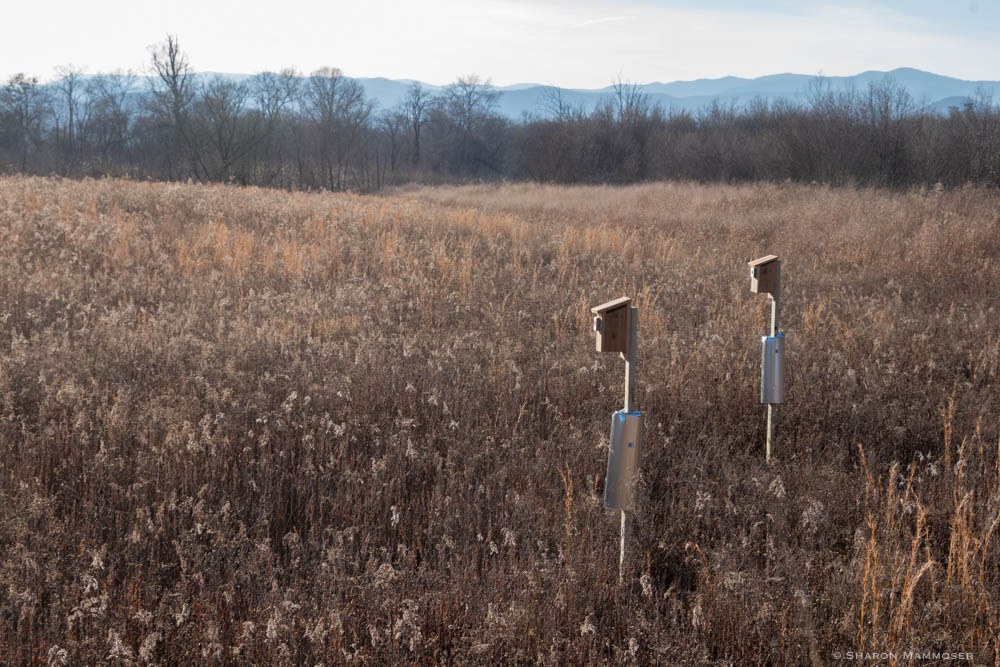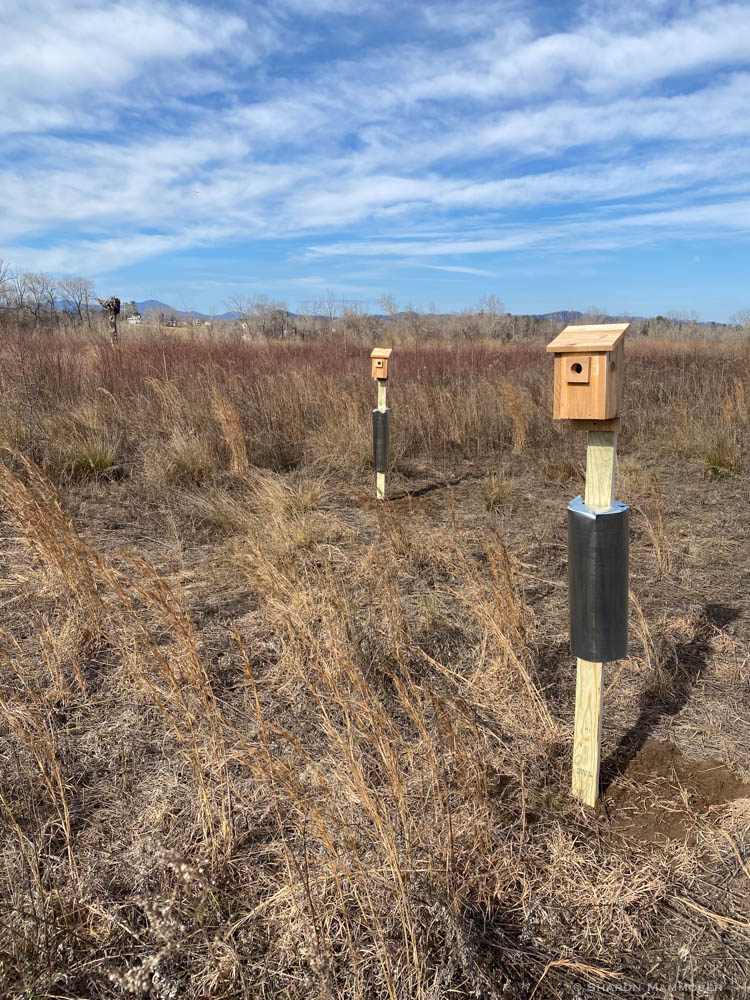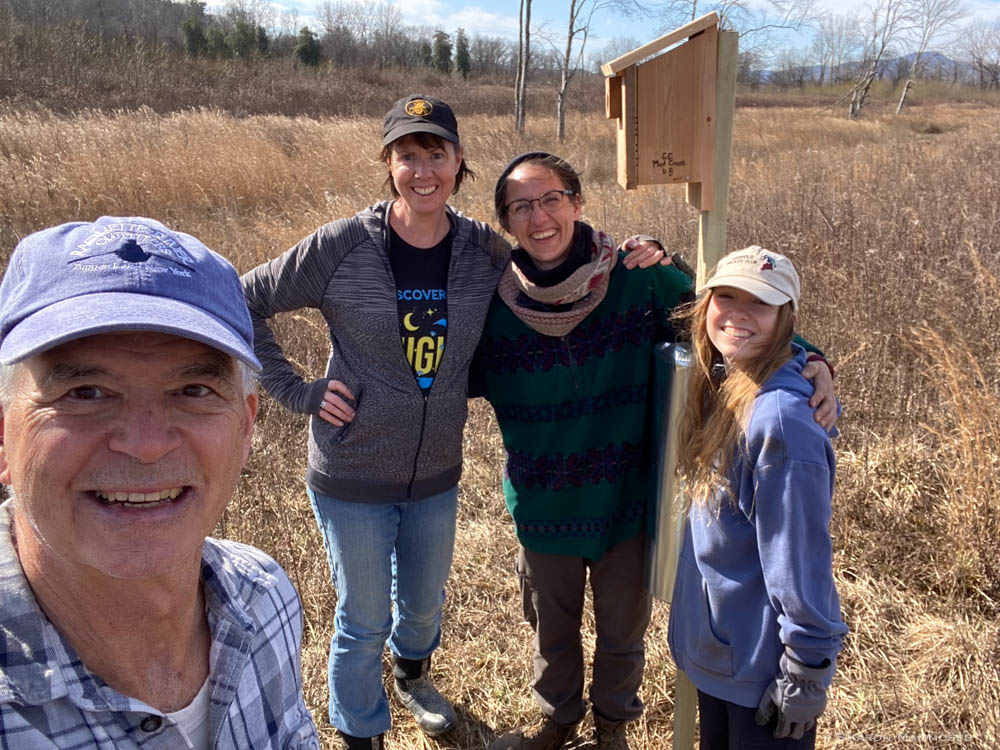Mud Creek Gets New Bluebird Boxes

Article and photography by naturalist Sharon Mammoser.
Bluebirds, tree swallows and chickadees residing at the Conserving Carolina property of Mud Creek in Mills River have eight brand new nesting boxes in the meadows there. Built by my husband Joe Goldston and I, and installed with the help of AmeriCorps members Sara Wrenn and Elisabeth Nash, these boxes provide much-needed homes for cavity-nesting birds that traditionally would take over old woodpecker holes for raising their young. These days between habitat loss, the prevalence of pesticides in many neighborhoods, and the tendency of people to cut down any dead trees in their yards, cavity nesters can’t always find suitable places to live. Joe says, “I’m happy to help out my feathered friends and will smile knowing my efforts make a difference. Plus, it will be a joy to watch the birds using their new homes.” In addition to the houses, Joe also fitted each post with a section of stove pipe that serves as a predator guard to deter raccoons and snakes from helping themselves to a free meal.

Mud Creek is the perfect habitat for eastern bluebirds and tree swallows with its location beside the French Broad, along with a natural mix of wild grasses, trees, and other plants, and its lack of domestic cats and pesticides. Bluebirds are insectivores, feeding mainly on ground dwelling insects like caterpillars, grasshoppers and crickets. They hunt from perches nearby, watching the ground until they spot a suitable insect. Along with more than 95% of terrestrial birds, bluebirds feed their growing babies insects, not seeds, including many, many caterpillars. Turns out soft and nutrient-dense caterpillars are the perfect food for young birds.
Many Americans actively attract birds to their yards, spending hundreds of dollars each year on seeds and feeders. And many desire to help bluebirds, cardinals, and other birds. But if we really want to help our birds— including our beloved bluebirds— we need to change the way we maintain our outdoor spaces. Most people give no thought to the fact that insects are the foundation of a healthy ecosystem. We cannot have birds without insects. And we cannot just welcome the “pretty” insects like the colorful butterflies we all know and love. It’s so easy for homeowners to make a few small changes to help out the local wildlife. We can all be wildlife heroes! We must stop doing what we’ve always done and operating as if we are the only ones on this planet. We can eliminate pesticides, keep our cats indoors, turn off our outdoor lights at night, leave our leaves on the ground, welcome moths and other insects, and most of all, shrink or eliminate our lawn. Perhaps people are unaware that sod or “perfect” green lawns are anything but perfect. In fact, they are complete DEAD zones, giving nothing back to wildlife and actually killing any wildlife that might live there.
It’s great that there are eight new bluebird boxes at Mud Creek. But wouldn’t it be even greater if every homeowner in western NC (and the U.S.) made a few small changes that allowed wildlife to thrive right in their own yards? Now THAT would be newsworthy!
